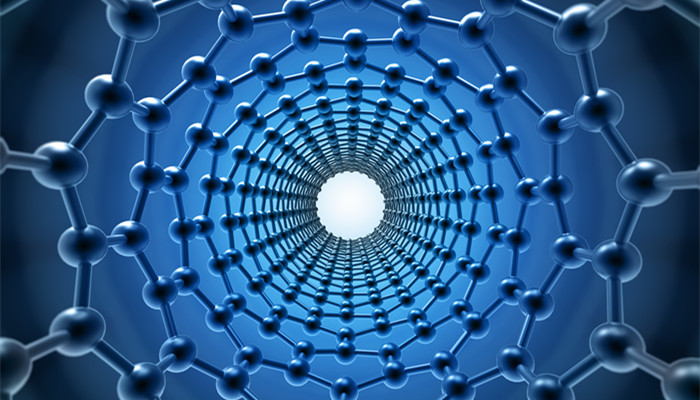
Silicon carbide fiber is a high-performance new material that plays an important role in the high-tech industry.
Silicon carbide fiber (SiC fiber) is an inorganic ceramic fiber material with a β-silicon carbide structure. Silicon carbide fiber has the advantages of light weight, high strength, high temperature resistance, oxidation resistance, high chemical stability, and high corrosion resistance. Its overall performance is better than that of carbon fiber, especially its physical and chemical properties are more stable under extreme conditions. According to the shape, silicon carbide fibers can be divided into two categories: whiskers and continuous fibers.
Silicon carbide whiskers are single crystal fibers, cubic whiskers, with a length within 300 microns and a diameter within 2 microns. They have the advantage of very few defects and can be used as reinforcing materials to be combined with plastics, metals, ceramics and other matrices. Composite to increase the strength and toughness of the matrix material; silicon carbide continuous fiber, also known as silicon carbide fiber filament, can be used as a reinforcement to manufacture high-end high-temperature resistant composite materials.
Silicon carbide fiber is mainly prepared by chemical vapor deposition method, precursor conversion method, activated carbon fiber conversion method and other processes. Among them, the precursor conversion method uses dichlorodimethylsilane as the raw material to prepare the precursor polycarbosilane, spins it to obtain organic fibers, and then prepares inorganic silicon carbide fibers through oxidative cross-linking, high-temperature cracking and other processes. The precursor conversion method has the advantages of high yield, low cost, and good product quality, and is currently the mainstream preparation process for silicon carbide fibers.
Silicon carbide fiber has excellent comprehensive properties and can be combined with other materials to prepare composite materials with even better properties. Silicon carbide fiber and its composite materials can be used as lightweight high-strength materials, high-temperature resistant materials, heat shielding materials, high-temperature absorbing materials, radiation protection materials, stealth materials, etc., and are used in aerospace, nuclear industry, national defense and military industry and other fields. To manufacture engine blades, turbine discs, aircraft brake pads, fuselage structural parts, nuclear reactor fuel elements, radars, cruise missiles and other products.
According to the “China Silicon Carbide Fiber Industry Market In-depth Research and Development Prospects Forecast Report 2022-2027” released by the Industrial Research Center, Silicon carbide fiber is a high-performance new material with huge room for development in high-tech industries. In 2021, the global silicon carbide fiber market will be approximately US$820 million; it is expected that the global silicon carbide fiber market will grow at a compound annual growth rate of approximately 33.6% from 2022 to 2027, and the market size will reach US$4.66 billion by 2027. The global aerospace, nuclear, military and other industries are developing rapidly, technology is constantly upgrading, and the demand for new materials is strong, which has driven the rapid expansion of the silicon carbide fiber market.
Globally, silicon carbide fiber manufacturers are mainly concentrated in Japan and the United States. Representative companies include Japan Carbon Corporation, Ube Industries of Japan, and Dow Corning of the United States. Japan is the world’s major producer of silicon carbide fiber. The main silicon carbide fiber-related manufacturers in my country include Suzhou Saifei Group Co., Ltd., Ningbo Zhongxing New Materials Technology Co., Ltd., Hunan Boxiang New Materials Co., Ltd., etc.
Industry analysts said that after long-term continuous development, my country’s silicon carbide fiber-related technical bottlenecks have continued to break through, and the third generation of silicon carbide fiber has been successfully developed. Products are at the internationally advanced level. However, my country’s silicon carbide fiber research results are weak in industrial transformation, its industrial production capacity is far behind Japan’s, and product quality stability is insufficient. In order to meet the development needs of downstream high-tech industries, my country’s silicon carbide fiber industrial production strength needs to be continuously enhanced.

 微信扫一扫打赏
微信扫一扫打赏

